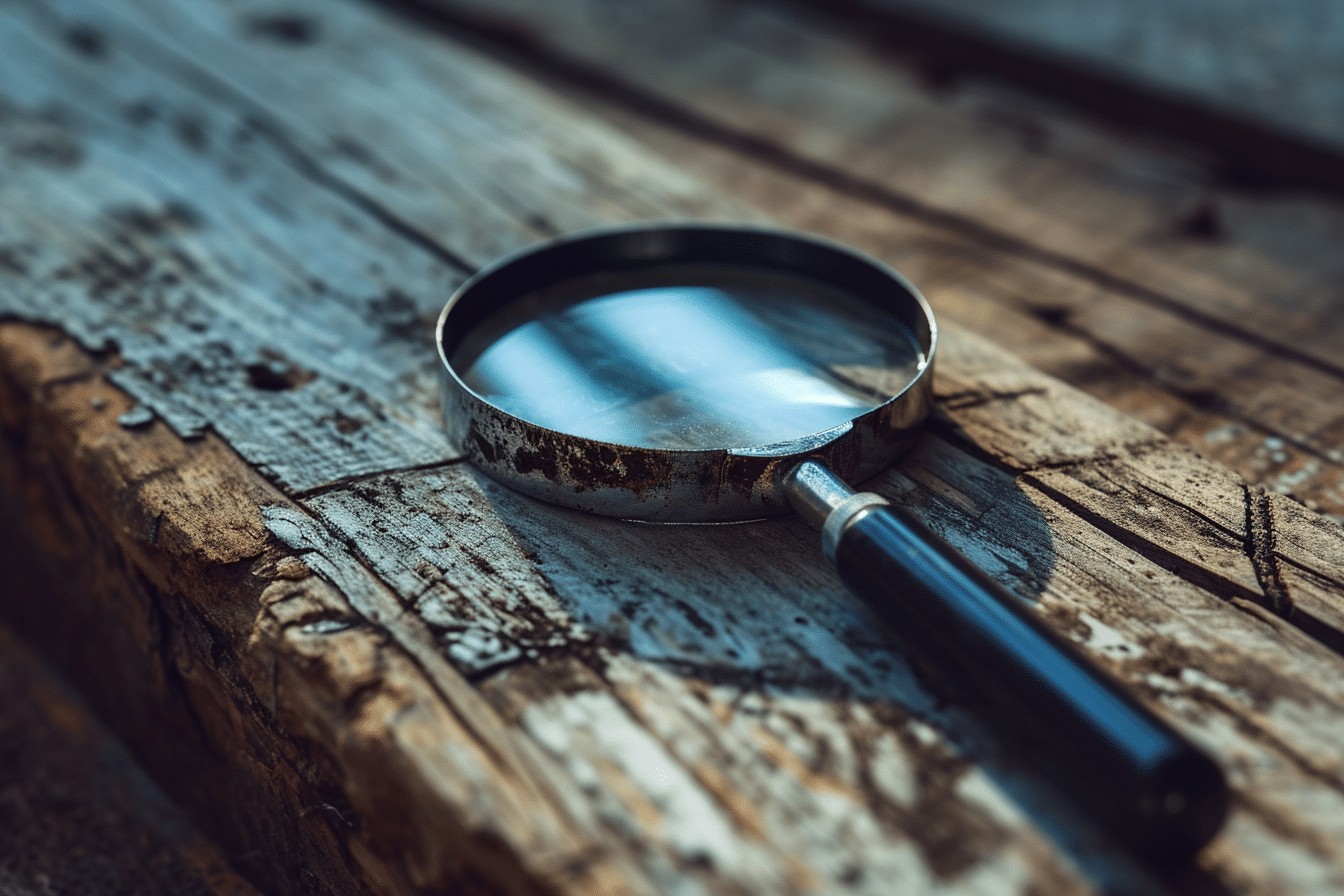
Common Issues Found in Home Inspections: What to Watch Out For
Buying a new home can be an exciting experience, but it also comes with potential challenges, particularly when it comes to home inspections. A professional home inspector is a crucial part of the home buying process, offering buyers and real estate agents valuable insights into the true condition of a property. The main goal is to uncover any problems that could affect the value or safety of the home that may not be noticeable during a regular walkthrough.
Some of the most common issues found in home inspections include structural problems, exterior damage, system malfunctions, and hazards or health concerns. Tackling these issues can vary from simple fixes to more serious concerns that may require negotiating with the seller for repairs or a reduction in price. Understanding what to expect during a home inspection can help buyers feel more confident and informed when making decisions about their potential new home.
Key Takeaways from Common Issues Found In Home Inspections
- Home inspections identify problems affecting value or safety
- Common issues include structural, exterior, and system problems
- Buyers should be prepared to negotiate repairs or price adjustments based on inspection findings. Common Problems Found During Home Inspections offers a more extensive list of flaws to look for during this process.
Understanding Home Inspections
The Role of a Home Inspector
A home inspector plays a crucial role in the home buying or selling process. They’re responsible for evaluating a property’s condition and identifying any defects or safety issues. This helps both the buyer and seller to make informed decisions about the property’s true market value.
Home inspectors conduct a thorough, unbiased assessment of the property, providing a detailed report on their findings. This report enables all parties involved to understand the home’s condition and make decisions accordingly.
What Is Inspected
During a home inspection, the inspector examines various aspects of the property, such as:
- Exterior: siding, foundation, roofing, drainage, and landscape
- Interior: doors, windows, walls, ceilings, and floors
- Plumbing: pipes, faucets, drainage, and sewer system
- Heating and cooling systems: furnace, air conditioning, and ventilation
- Electrical: wiring, lighting, outlets, and switches
- Appliances: refrigerator, dishwasher, and range
After the inspection, the home inspector provides a report detailing their observations, including any potential issues or deficiencies. This report assists both buyers and sellers in understanding the property’s condition and addressing any concerns.
Importance for Buyers and Sellers
A comprehensive home inspection is essential for both buyers and sellers to accurately gauge the property’s market value. For buyers, a home inspection uncovers potential problems that may require costly repairs, helping them negotiate a better price or decide whether to proceed with the purchase.
For sellers, a pre-listing inspection can identify issues that may deter potential buyers, allowing them to make necessary repairs and improvements before listing the property. This can ultimately lead to a smoother sale and a higher market value.
To sum it up, a home inspection is a vital tool for all parties involved in a property transaction. By having a thorough understanding of the property’s condition, buyers and sellers can successfully negotiate, protect their investment, and ensure a fair and smooth transaction.
Structural Issues
Foundation and Basement
When it comes to home inspections, one of the main areas of concern is the foundation and basement. Issues such as cracks, water seepage, or structural damage can compromise the entire building’s stability. In some cases, an uneven foundation may cause displacement of the home’s load-bearing walls and floors. Identifying these issues early on allows homeowners to address them before they escalate. More information on the most common home inspection findings can be found in this helpful resource.
Walls and Ceilings
Inspecting the walls and ceilings during a home inspection can reveal signs of moisture damage, cracks, or even termite infestation. These problems may be due to a variety of factors, such as inadequate ventilation or faulty gutter systems. Moreover, bulging walls and sagging ceilings can indicate structural issues that require immediate attention.
Additionally, look out for any separation between the walls and ceilings as this can indicate a shift in the home’s structure.
Floors and Roof Structure
Lastly, the floors and roof structure should also be thoroughly examined during a home inspection. Sagging or uneven floors may hint at underlying structural problems that need to be addressed by professionals. Similarly, inspecting the roof for signs of wear, leaks, or missing shingles is crucial to avoid costly repairs in the future.
A well-maintained roof ensures that the home remains properly insulated while protecting it from potential water and pest damage. By addressing these structural concerns promptly, homeowners can protect their investment and ensure the longevity of their property.
Exterior Problems
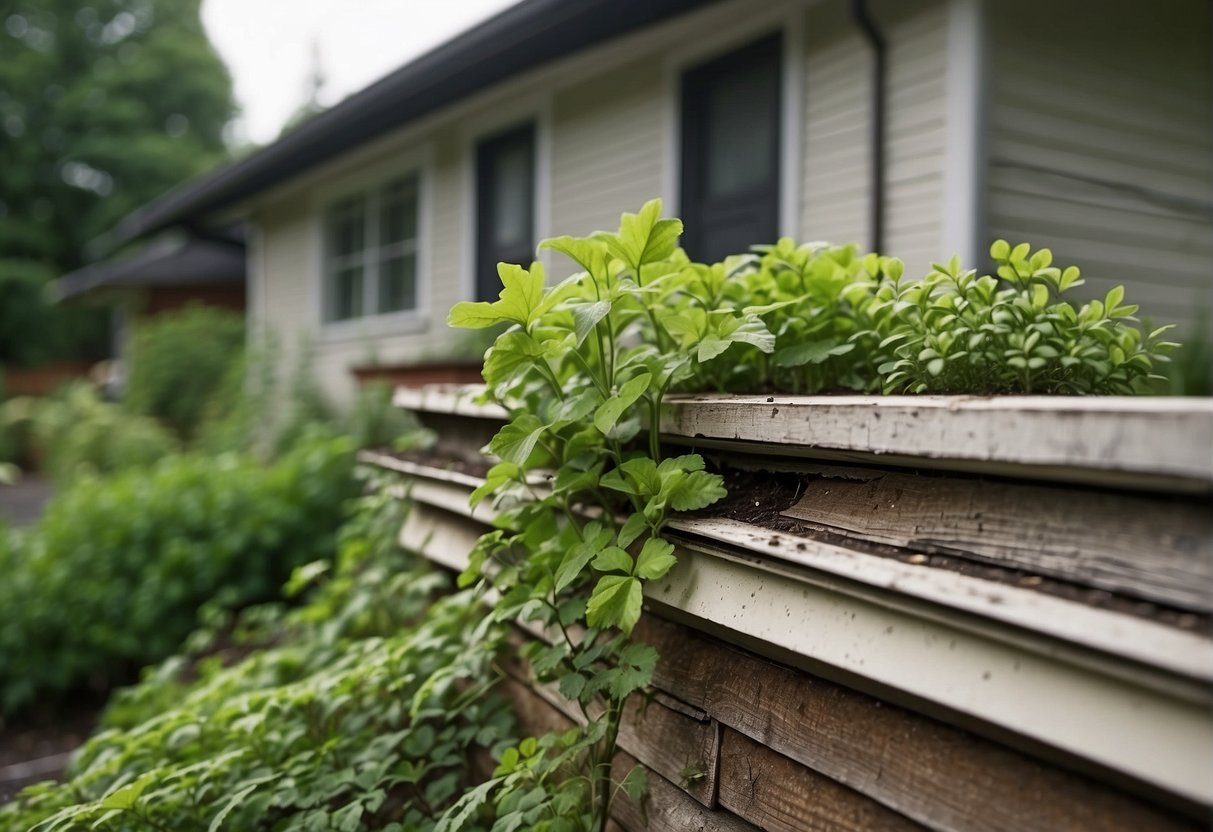
Roof Issues
When it comes to home inspections, one common problem area is the roof. Inspectors often find issues with the roofing materials themselves, such as missing or damaged shingles, tiles, or metal panels. These issues can lead to leaks and water damage, which is why they need to be addressed promptly.
Another issue that may arise during a home inspection is wood rot. This can occur when moisture penetrates the roofing materials, causing the underlying wood to decay. Wood rot can compromise the structural integrity of the roof and may require extensive repairs.
Here’s a quick list of common roof problems to keep an eye out for:
- Missing or damaged shingles, tiles, or metal panels
- Leaks and water damage
- Wood rot and decay
Drainage and Grading
Another essential aspect of a home inspection is examining the drainage and grading around the property. Proper drainage helps prevent water from pooling near the foundation, which can lead to issues such as mold growth and structural damage.
One sign of inadequate drainage is the presence of damp or wet spots near the foundation or in the basement. Additionally, improper grading may cause water to flow towards the home rather than away from it.
To address these issues, consider taking the following steps:
- Install gutters and downspouts to direct water away from the foundation
- Ensure downspouts extend at least five feet from the home
- Grade the soil around the foundation to create a slope away from the home
- Keep plants and trees at least three feet away from the foundation to prevent roots from disrupting drainage systems
Remember, catching these exterior problems early can save homeowners from costly repairs and potential headaches in the future.
System Malfunctions
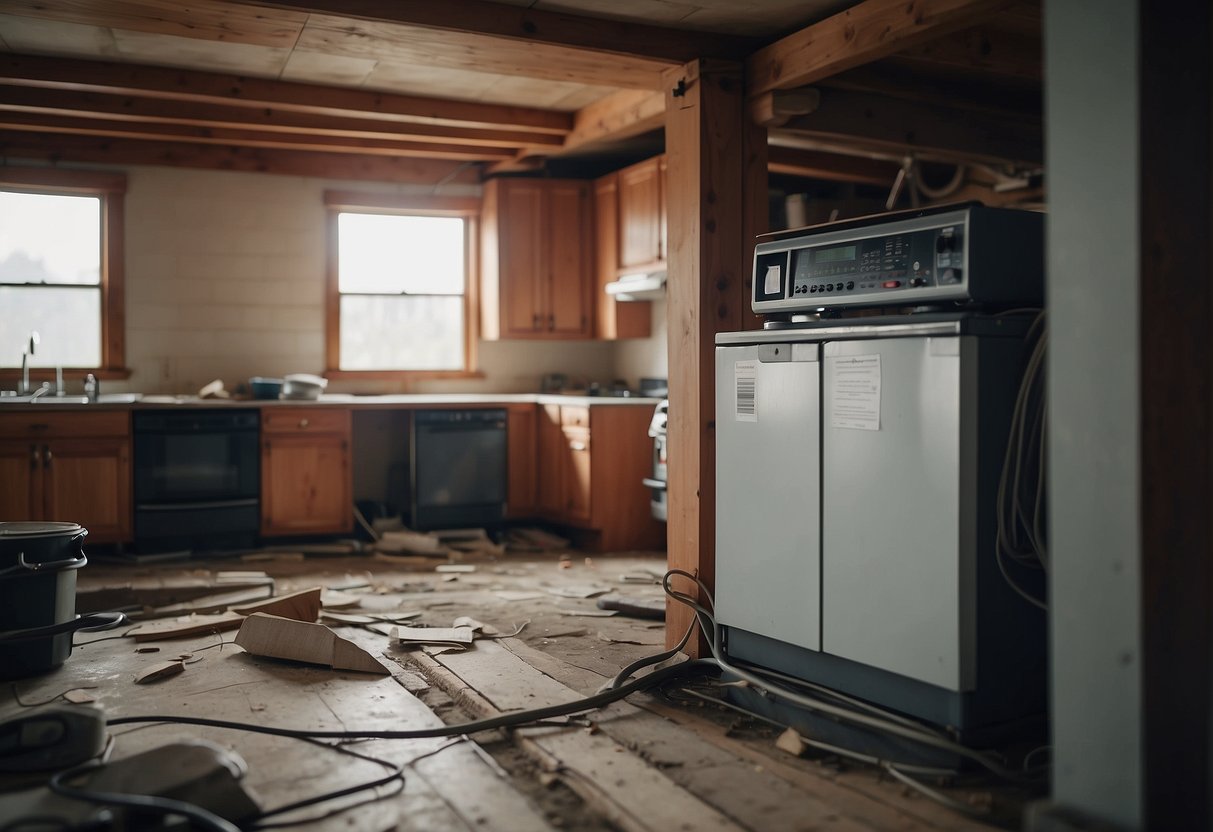
Electrical System
When it comes to home inspections, one common issue found is problems with the electrical system. Outdated systems may not be up to code, potentially posing safety hazards. A common problem is insufficient electrical service, which means the home doesn’t have enough power to meet modern demands.
- GFCI Outlets: It’s crucial to have ground fault circuit interrupter (GFCI) outlets installed in areas where water and electricity are in close proximity, like bathrooms and kitchens. These outlets help prevent electrical shocks.
- Electrical Wiring: Old or damaged wiring can lead to electrical fires. Inspectors often find issues such as exposed wires or ungrounded outlets.
Plumbing System
Another common issue in home inspections is the plumbing system. Outdated or poorly maintained plumbing can cause various problems like leaks and water damage. Here are some common issues:
- Leaking Pipes: This can lead to water damage, mold, and even structural issues.
- Low Water Pressure: It may indicate a problem with the water supply or the plumbing system itself.
- Outdated Materials: Older homes may have plumbing materials like galvanized pipes that can corrode and affect water quality.
Heating and Cooling
An efficient HVAC system is essential for maintaining a comfortable home environment. Home inspectors often find issues with heating and cooling systems, such as:
| Issue | Description |
|---|---|
| AC Malfunction | Air conditioning units can break down or lose efficiency over time. |
| Furnace Issues | Inspectors may discover problems like exhaust flue obstructions or cracked heat exchangers. |
| Inadequate Insulation | Poor insulation can lead to higher energy costs and discomfort in the home. |
It’s important to perform regular maintenance on HVAC systems to avoid these problems. Regularly changing filters and having a professional inspection can prolong the life of the system and maintain its efficiency.
Hazards and Health Concerns
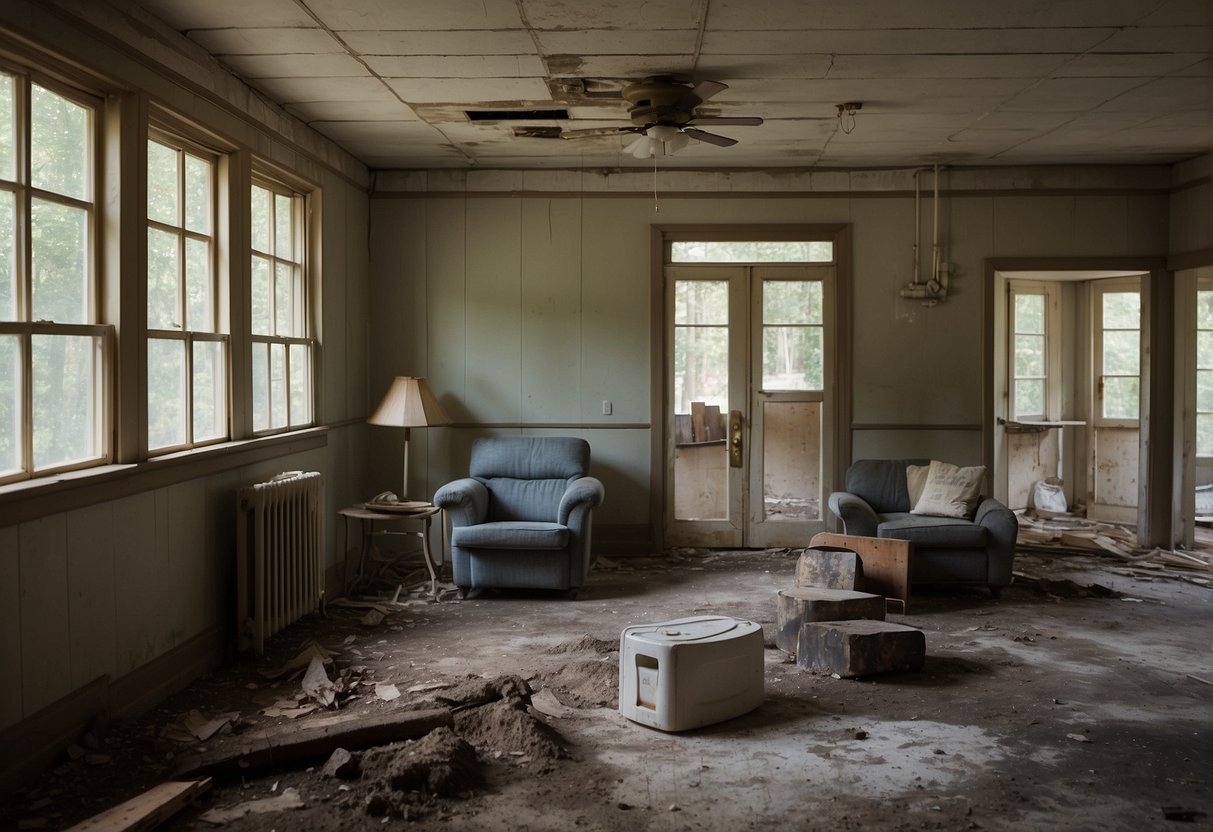
Mold and Mildew
Mold and mildew are common issues found during home inspections. They pose a risk to a homeowner’s health, especially for those with respiratory issues and allergies. Mold can grow in damp or humid conditions, so keep an eye out for signs such as:
- Dark, fuzzy spots on walls, ceilings, or flooring
- Musty odors
Mold remediation can be costly, but it’s important for the well-being of those living in the home. Ensure proper ventilation and monitor humidity levels to prevent mold growth.
Asbestos and Radon
Asbestos and radon gas are hazards sometimes found in older homes. Asbestos was used in various building materials in the past, leading to potential lung cancer risks if disturbed. Radon gas is a radioactive, colorless, and odorless gas that can seep into homes from soil or rock. Long-term exposure to radon has been linked to lung cancer.
Test your home for radon gas, and if it’s detected, professional help is necessary to mitigate the issue. As for asbestos, avoid disturbing any materials that may contain it and consult with an asbestos professional if remodeling or repairs are needed.
Lead-Based Paint and CO
Lead-based paint is another concern in older homes, particularly those built before 1978. It can cause severe health issues if ingested, especially in children. During a home inspection, watch for peeling or deteriorating paint. It’s crucial to address any lead-based paint issues properly and follow the protocol for containment and clean-up.
Carbon monoxide (CO) is a colorless, odorless gas that can be deadly. CO detectors are essential in all homes to protect against poisoning caused by faulty furnaces, water heaters, or other appliances. Ensure detectors are functioning correctly and placed in optimal locations. Regularly inspect your appliances for potential leaks and maintain them properly to minimize CO hazards.
Infestation and Pests

Termites and Wood Damage
Termites can be a homeowner’s worst nightmare, especially when it comes to wood damage. These little insects have an insatiable appetite for wood, which can lead to extensive damage to the home’s structure. Often, homeowners are unaware of termite infestation until it’s too late.
To detect a termite infestation, keep an eye out for mud tubes on the walls, baseboards, and even plumbing pipes. These mud tubes serve as a highway for termites to travel between their colony and their food source. It’s essential to take immediate action once you spot them. A pest control professional can help investigate the extent of the damage and formulate a plan to eliminate these wood-hungry insects.
Additionally, keep an eye out for signs of rot in your home’s wood structures. While not necessarily indicative of termites, rot may weaken the wood, making it more susceptible to termite infestation.
Other Common Infestations
Along with termites, other pests can cause significant problems in and around your home. Here’s a brief list of common household infestations:
- Rodents: Mice and rats can cause structural damage and contaminate food sources. Keep an eye out for droppings and gnaw marks around your house.
- Cockroaches: These resilient insects are known carriers of diseases and allergens, posing health risks to your family. Look for signs of activity in dark, damp areas like under sinks or behind appliances.
- Bed bugs: Though not structural pests, bed bugs are a nuisance and notoriously difficult to eradicate. Be vigilant for signs of infestation like small, reddish-brown bugs on mattresses and linens.
Don’t forget that prevention is always better than cure. Invest in routine pest control to safeguard your home against unwanted guests. However, if you do spot any signs of infestation, be sure to call in a professional to address the issue. A thorough home inspection can help identify and potentially avoid costly structural repairs caused by pesky invaders.
Major Repair Issues
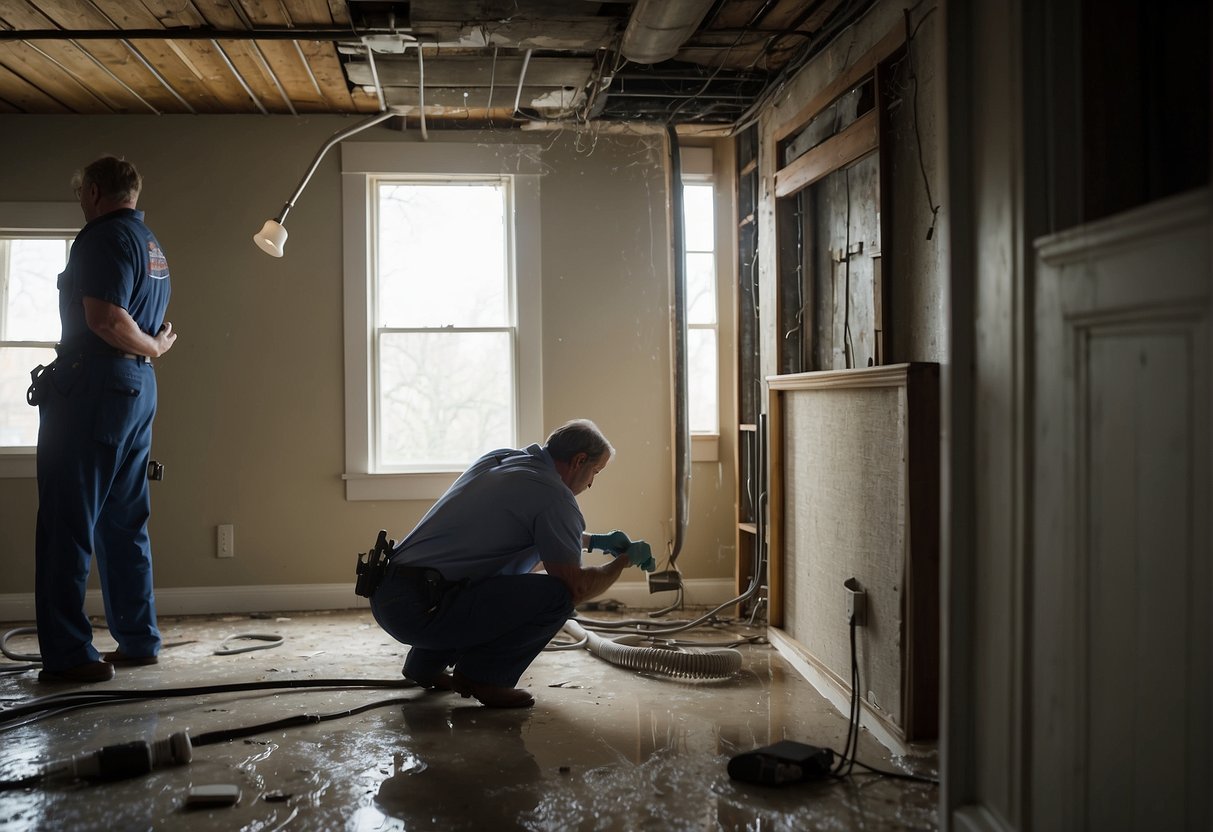
Significant Repairs
During a home inspection, the inspector may identify major repair issues that require significant repairs. Some common examples are:
- Foundation cracks or settling
- Roof leaks or deterioration
- Plumbing issues such as leaks or outdated systems
- Electrical problems or outdated wiring
- Termite or pest infestation
Buyers and their real estate agents should take these issues seriously, as they will likely impact the overall safety, function, and value of the property. Sellers should be prepared to address these issues before listing their home for sale.
Cost Estimates
It’s essential to estimate the cost of these major repairs so that the buyer can make an informed decision about whether to proceed with the purchase. The buyer and their real estate agent can seek out professional quotes from local contractors or repair companies. Here’s a simple table to help keep track of these estimates:
| Repair Issue | Estimated Cost | Contractor/Company |
|---|---|---|
| Foundation Crack | $000 | Company A |
| Roof Leak | $000 | Company B |
| Plumbing Problem | $000 | Company C |
| Electrical Wiring | $000 | Company D |
Negotiating Repairs
Once the buyer has a clear understanding of the major repairs needed and their estimated costs, they should discuss with their real estate agent on what steps to take next. Buyers can typically choose to:
- Request the seller to make the repairs before closing the deal.
- Negotiate a reduction in the purchase price to cover the cost of repairs.
- Request a credit from the seller to apply toward repair costs.
It’s important for both the buyer and seller to work together with their respective real estate agents to reach a fair agreement on handling major repairs. An open line of communication can help ensure a smoother transaction and avoid unnecessary delays.
Home Inspection Outcomes

Interpreting the Report
When receiving the inspection report after a home inspection, it’s essential for both the buyer and seller to understand the findings. The report is a detailed document outlining any issues found during the inspection. By carefully reviewing the report, both parties can make informed decisions.
Some common issues found from home inspections include:
- Electrical problems
- Plumbing issues
- Roof damage
- Foundation concerns
For a comprehensive list of issues, you can refer to “Don’t Forget to Check These 15 Things That Fail a Home Inspection“.
Dealing with Findings
Once the inspection report is in hand, both buyer and seller need to decide how to address the findings. Homebuyers can use the report to negotiate repairs or a lower price, while sellers can decide if they want to make the necessary fixes.
Here are some typical reactions to findings in a home inspection:
- Buyer requests repairs: The buyer may ask the seller to fix specific problems before closing, or the seller may agree to make repairs up to a certain amount.
- Seller makes repairs: The seller voluntarily fixes the found problems to provide peace of mind to the buyer.
- Price adjustment: If the seller doesn’t want to make repairs, they may agree to lower the home’s price, allowing the buyer to take care of the repairs.
After the Inspection
Once both sides have come to an agreement on the inspection findings, it is crucial to continue with the home buying or selling process. The buyer should make sure to follow up on any additional inspections recommended in the inspection report. The seller, on the other hand, should complete agreed-upon repairs and provide documentation as necessary.
By thoroughly and effectively handling the home inspection process, both buyers and sellers can ensure a smooth transaction and a successful outcome.
Luxury Specialist at McGraw Realtors
With a diverse background, including a career as an Air Force fighter pilot and entrepreneurship, Bill transitioned to real estate in 1995. Co-founding Paradigm Realty with his wife, Charlene, he quickly rose to prominence in Oklahoma City’s luxury real estate scene. Now, as one of the top agents with annual sales surpassing $20 million, Bill’s dedication to exceptional service remains unparalleled. With a legacy spanning over two decades in the industry, Bill’s expertise and commitment make him a trusted name in luxury real estate.